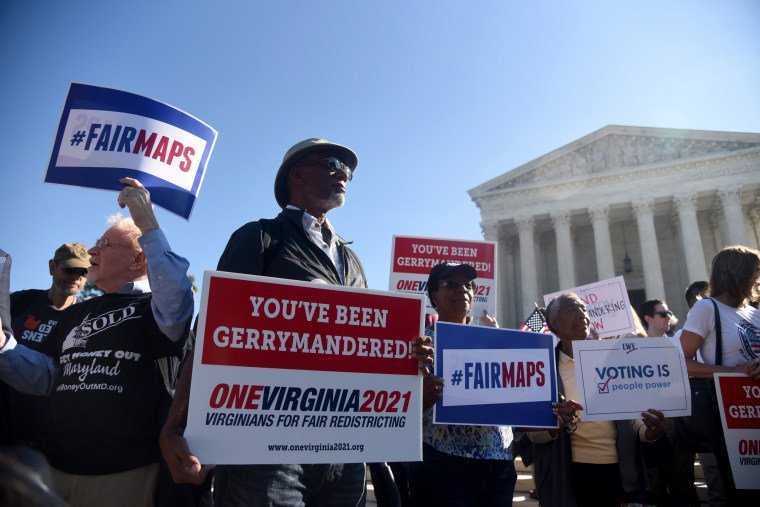The Supreme Court of the United States on Thursday abdicated its responsibility to protect the right of qualified citizens to vote. In a 5-4 split between conservative and liberal justices, the court handed state lawmakers virtually unfettered discretion to draw district lines that dilute our votes.
Chief Justice John Roberts did that via a majority opinion ruling that questions of partisan gerrymandering cannot be decided by federal judges. The Constitution and the federal law are silent about what, if any, standard should be used for partisan gerrymandering claims. On Thursday, a majority of the court concluded that federal judges should not be involved in policing them.
This is a huge win for conservative jurists, who have long argued that judges should not be the ones policing the inherently political questions that partisan gerrymandering claims raise.
Partisan gerrymandering is the process of drawing the lines around who votes in which legislative district to maintain or expand political power for one party. In most states, state lawmakers draw the state and federal district lines. (In some states, like California, voters have elected to have independent redistricting commissions draw the lines.)
It may sound like business as usual for politicians to want to keep or increase their political power, and it is. But at a certain point, this quest for political domination starts to conflict with our right to vote.
Let’s use the example of a hypothetical state, Rainbows, with a 100-member congressional delegation. If 60 percent of registered voters in Rainbows are Democrats and 40 percent are Republicans, we would expect Democrats to win about 60 percent of the congressional slots in that state, or some 60 seats. But instead, Democrats win 80 of those seats because of the way they drew the congressional district lines.
Given how many congressional seats they were able to capture, Democrats in Rainbows almost certainly engaged in partisan gerrymandering. They would have done so either by packing Republicans into just a few districts so their votes could have virtually no chance of determining election outcomes in other districts, or by cracking Republican strongholds and spreading the voters out among many districts to nullify their influence in any given one.
For years, the Supreme Court has struggled with questions of partisan gerrymandering. The biggest issue — until Thursday morning — was whether these claims are justiciable, meaning, whether courts can and should be involved in claims involving partisan gerrymandering. Today the court answered that question in the negative.
This is a huge win for conservative jurists, who have long argued that judges should not be the ones policing the inherently political questions that partisan gerrymandering claims raise. Instead, courts should leave these questions to elected lawmakers, who can be held accountable by their voters. Never mind the irony that partisan gerrymandering allows lawmakers to diminish the votes of eligible citizens and be less responsive to their constituents.
Conversely, this is a significant loss for liberal jurists who have argued that judges are charged with upholding the Constitution, including the right to vote. That means judges abdicate their responsibility if they hand power to state lawmakers to draw voting lines in order to maximize their partisan power.
By allowing state lawmakers to have all-but-unlimited authority to draw legislative district lines, the Supreme Court has essentially given the green light for elected officials to choose their voters, instead of allowing voters to choose their elected officials.
But for those who believe the courts should referee partisan gerrymandering, all is not lost. Congress could pass legislation that dictates a standard for partisan gerrymandering cases, though that is highly improbable. The more likely solution will come from the states.
The states are now our safety valves against partisan overreach in the form of gerrymandering.
States, particularly those that allow citizens to directly bypass lawmakers and enact laws, have created independent redistricting commissions. These commissions are, in part, aimed at eliminating partisan gerrymandering. In addition, states can prohibit partisan gerrymandering and state court judges can conclude that the process violates state constitutions.
With the Supreme Court preventing federal judges from fulfilling their duty to protect the right to vote, the states are now our safety valves against partisan overreach in the form of gerrymandering.


